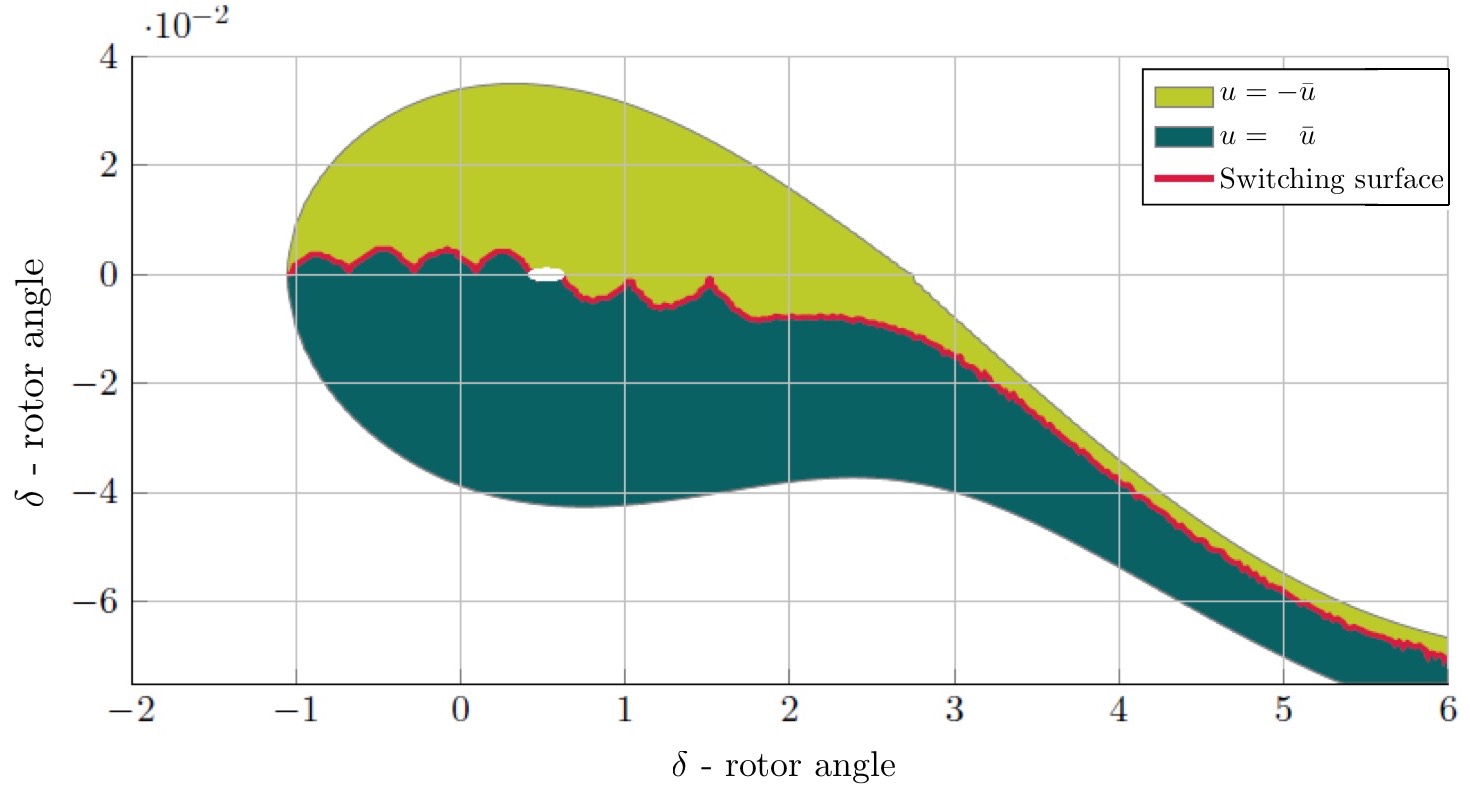Optimal control of HVDC links for enhancing power system stability
The property of an AC power network to return to a stable equilibrium point and synchronism after a disturbance is known as rotor-angle stability or transient stability. Maintaining transient stability becomes increasingly challenging due to the growing share of non-synchronous converterbased generation from renewables in the power network.
It is known that converter-based elements such as HVDC (High Voltage Direct Current) links also have the potential to enhance network stability by providing an additional degree of fast controllability of the power flow in the grid.
Our work addressed design of control strategies to determine how and when to temporarily adjust the injections of HVDC links in order to maximize the stability region of the power network. This work was achieved within two Master’s projects in collaboration with the Research Center for Energy Networks. Our first approach was based on linearization of the nonlinear dynamics of the power system around the stable equilibrium point. We then applied the Maximum Principle from optimal control theory to derive the HVDC control strategy that can steer each initial condition in the linearized region in minimum time to the stable equilibrum. We furthermore showed that the optimal control can be synthesized using a simple on/off strategy. In particular, one needs to switch the HVDC power between maximum and minimum allowed power limits and this switching is based on the state of the power system at each time. We next extended the analysis to nonlinear dynamics of the power system. In this case, the approach was based on numerically computing the partial differential equation that characterizes the stability region of the power system. As seen in the figure, the optimal control strategy is still on/off. However, the switching region is refined due to consideration of higher order terms in the nonlinear model.
The result of our studies show that one can optimally control the HVDC injections to maximize the region of attraction of the stable equilibrium point of a power network. Consequently, the transient stability of the power system can be maintained for a larger set of disturbances. Although the developed theory is general, the numerical computation can only be carried out for small network sizes (2-area power system). Our ongoing work develops abstractions and approximations to extend the computation to higher order power systems. If you are interested to discuss this further, please see the following paper and report and feel free to contact us!
The people involved in this project are Professor Maryam Kamgarpour,Alexander Fuchs (Research Center for Energy Networks), Claudia Beyss and Jeremias Seitz (MS students).
ESC Member, Maryam Kamgarpour is with Automatic Control Laboratory. The Automatic Control Laboratory (Institut für Automatik, IfA) is a part of the Department of Information Technology and Electrical Engineering (D-ITET).

